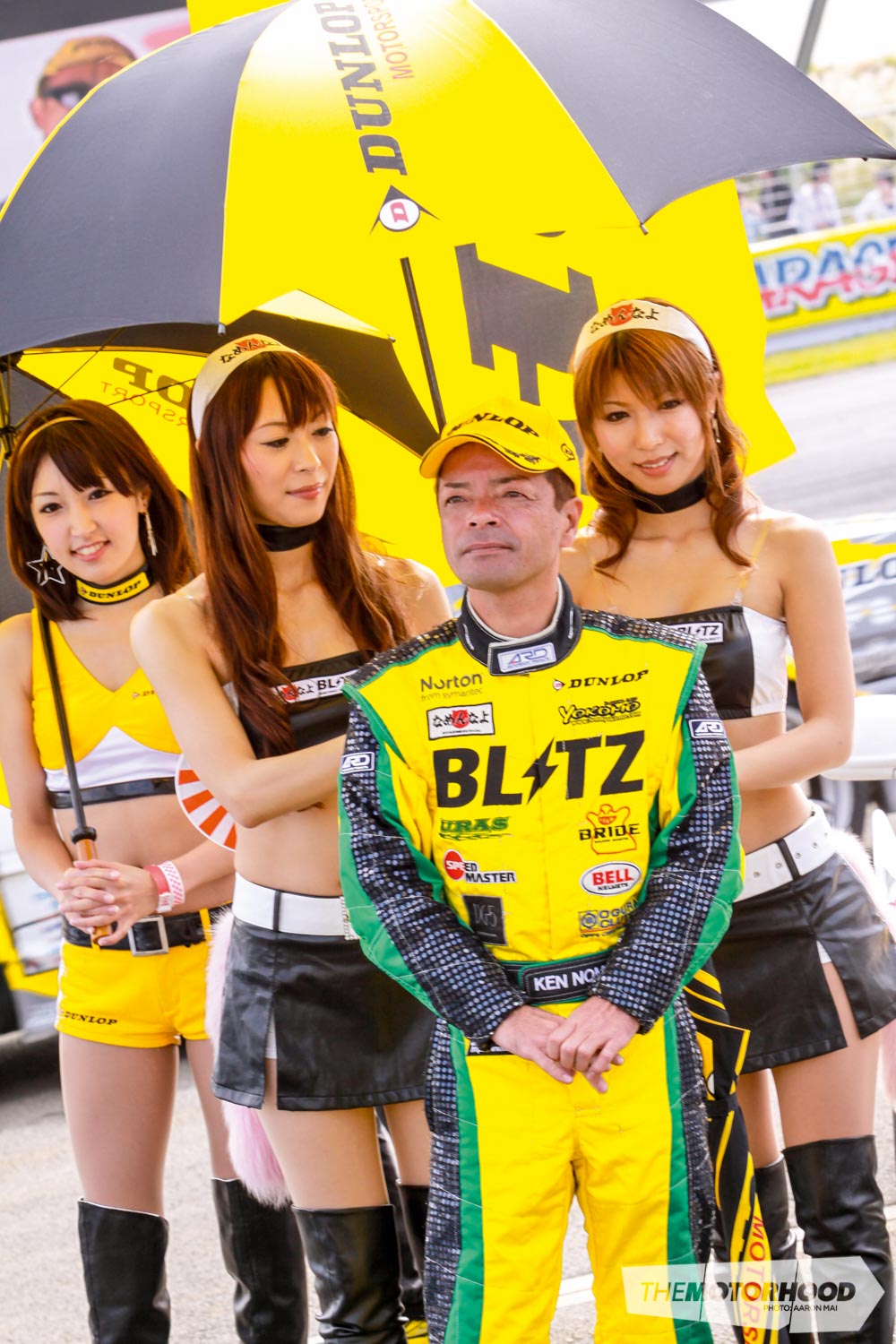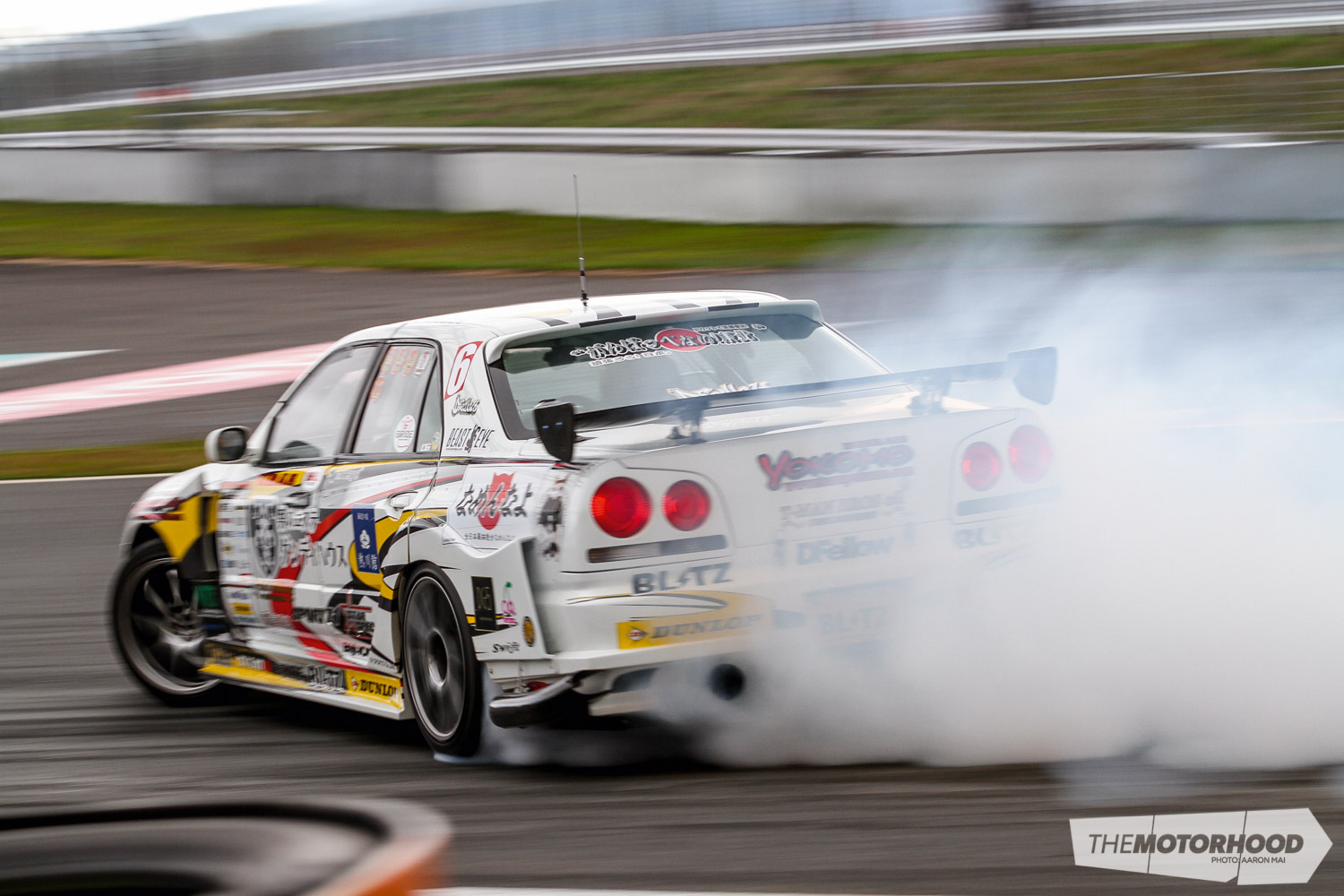
The world of drifting is full of colourful characters, although you would be hard-pressed to find someone with a larger personality than Japan’s Ken Nomura. Known as ‘Nomuken’ the Fukuoka-born ‘Driftmonkey’ wasn’t always destined to be behind the wheel, although his automotive ride to drifting’s elite level has been just as turbulent as a hairy ride around Ebisu Minami. As a youngster it was baseball that had him focused, playing at a top level through high school and under the eyes of scouts he was tragically struck down through injury.
Soon after turning 18 and getting his car license he found himself entangled in the midnight street-racing scene. He credits the drag scene for giving him the fundamental aspects of car control, throttle control and fine adjustments while under power. It wasn’t long after that he transferred his skills from the strip to the twisty mountain roads of the touge. Continuing to hone his skills in 1996 he entered the All Japan Ikaten Finals, a competition that searched around Japan for fresh driving talent — Nomuken was victorious and fast forward to 2001 the ‘Driftmonkey’ was born. Embracing his newfound identity in the motorsport world he started his own aero company — URAS that if spelt backwards reads SARU — Japanese for monkey.

His range of kits that were designed out of his own personal taste have become famously recognizable as a ‘Driftmonkey kit’. It’s fair to say that not too many drift cars become global racing icons although his Blitz Skyline has truly become a much loved and fondly remembered ride. The big four-door chassis paired up with the pint-sized drift king has been nothing short of a winning combo. “I can’t say the Skyline was ever a scientifically selected car for me, it really came down to the fact that it was large, predictable, and just suited my driving style, why drift something you aren’t used to?” explained Nomuken. With the fast-paced transition of drifting in Japan chopping and changing from one platform to another, it would only have made it difficult to stay at the pointy end of competition for any driver, so familiarity was the order of the day.

It wasn’t all plain sailing for Nomuken though, his debut in 2001 was described as ‘average’, but once Blitz came on board with sponsorship and a raft of new performance parts, he quickly started climbing up the ladder and was soon known as the ‘smoke master’. “The 34 was big and nicely weighted so it made good smoke and I am all about putting on a good show, both in the car and out of it”, he grins. As time ticked on, his skill behind the wheel caught the attention of GReddy. Still in his 34 platform, Greddy paired up with Nomuken to create the high-performance intake manifold for the RB25. Yup that’s right — you can thank Nomuken personally for that one!

After 25 years of drifting the much-revered pro has seen his fair share of international drifting, so what is his take on the difference in style? “In Japan we are very firmly focused on the spirit of ‘tsuisou’ which is tandeming; it’s all about getting right up against your competitors’ door and sticking with him all the way through the judging section. Proximity is key.” With the biggest focus on proximity, there are two other key components. “Angle and smoke are the other big things we must attain, I have noticed other countries focus more on speed and style, so when we travel you have to adjust your driving style to ensure you give the judges what they are looking for”. One thing he notices about the New Zealand scene is how similar it is to Japan, “You seem to follow in our footsteps regarding what the fundamentals of drifting should be; for Japanese drivers there is nothing more exciting than being millimeters off your rivals’ door handles while maintaining control of your car and not touching — this is the real rush of drifting for me”.

With the sport having evolved so quickly in the last ten years where does he see the sport headed? “It’s a difficult question; we didn’t think it would ever take off like it has. I can’t say where I see it going as I am amazed at where it is now. I can tell you where I hope it doesn’t go and that is further into the high realms of horsepower. There isn’t any reason to drift with massive power figures as it’s not about numbers, it should always be about the pure spirit of drifting — close combat powersliding — my D1SL Skyline has ample power at 450BHP”. He admits that many drivers have been caught up in the ‘horsepower struggle’ as in order to keep up you have no choice but to start playing with big power, or you will simply be left behind.

Embracing the idea that set-up should always be put before power in order to attain the ideal drift, his thinking is a breath of fresh air, I mean how can you argue with someone who has seen drifting in its infancy? After an insight into how the Driftmonkey ticks, I had a few more questions to ask. After years in the R34 platform and now the Toyota 86, why the change? “We had a large accident a while back and with the chassis being no good we hit a crossroads with where to go, and the decision was made to modernize our approach so we went with the 86 with the 2JZ up front.” Favourite drifting moments? “There are too many to list, the international events and my success in D1GP”. How much longer do you see yourself continuing on? “I’m having a lot of fun, and drifting isn’t something you give up or just stop doing. So … probably not for a while yet. Does Ebisu Minami scare me? Only in the rain,” he chuckles. Although the burning question for those of us who want to take a leaf out of his book, what does it really take to become a Driftmonkey? “You have to always maintain the fun aspect, and ensure you are always chasing door handles”.

View fullsize

View fullsize

View fullsize

View fullsize

View fullsize

View fullsize

View fullsize

View fullsize

View fullsize

View fullsize

View fullsize

View fullsize

View fullsize

View fullsize

View fullsize





